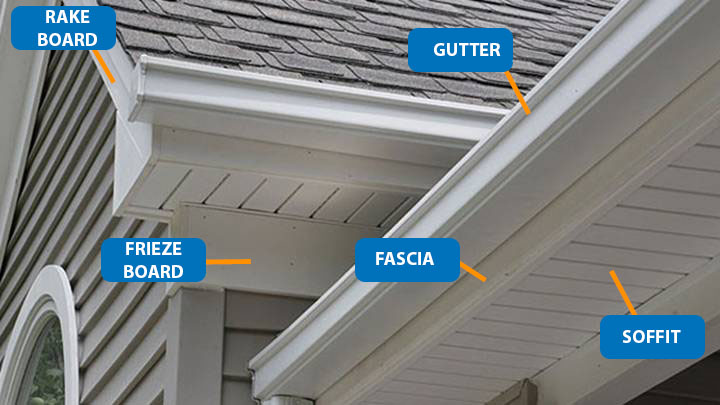Purpose
The purpose of exterior trim on a home is both functional and aesthetic. Exterior trim is a decorative element that can enhance a home’s appearance, while also serving to protect the home’s exterior from weather and other environmental factors, particularly as transition points between elements:
- Enhance Curb Appeal: Exterior trim can add character and style to a home, increasing its visual appeal and enhancing its curb appeal.
- Weather Protection: Trim can help protect a home’s exterior from water damage and other forms of weathering, including UV rays, wind, and pests. For example, window trim can help prevent water from seeping into the walls around the windows, while soffit and fascia can help prevent moisture and pests from entering the roofline.
- Seal Gaps: Trim can help seal gaps between building components, such as between the siding and the foundation, or around windows and doors, preventing air infiltration and improving energy efficiency.
- Create Clean Lines: Trim can help create clean, straight lines between different materials, providing a finished look to the exterior of the home.
- Conceal Imperfections: Trim can be used to conceal imperfections in the home’s exterior, such as gaps or uneven surfaces.







